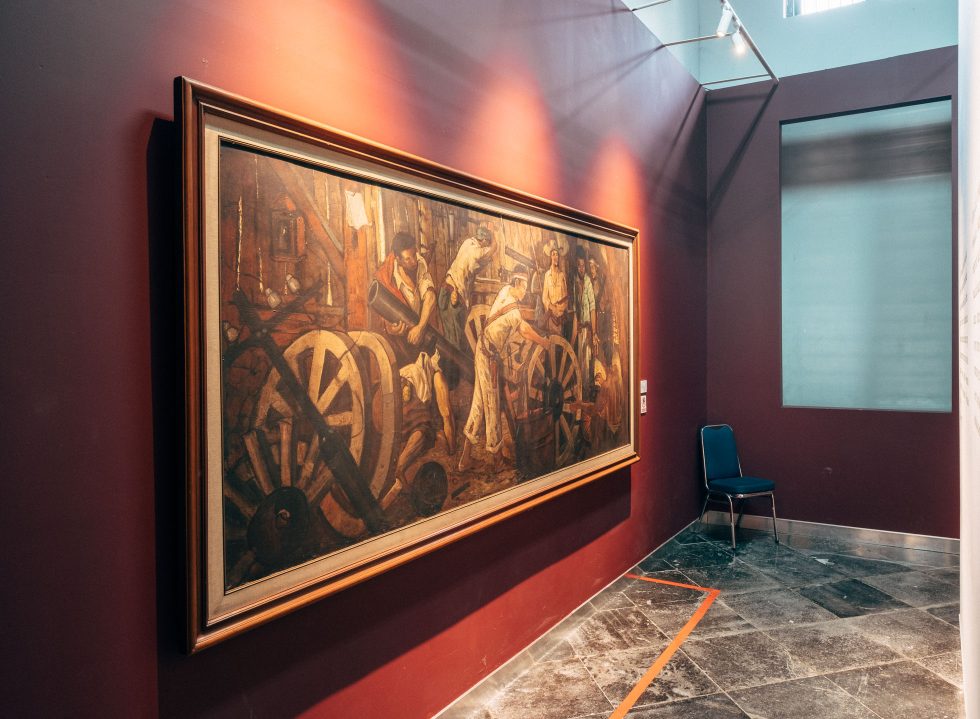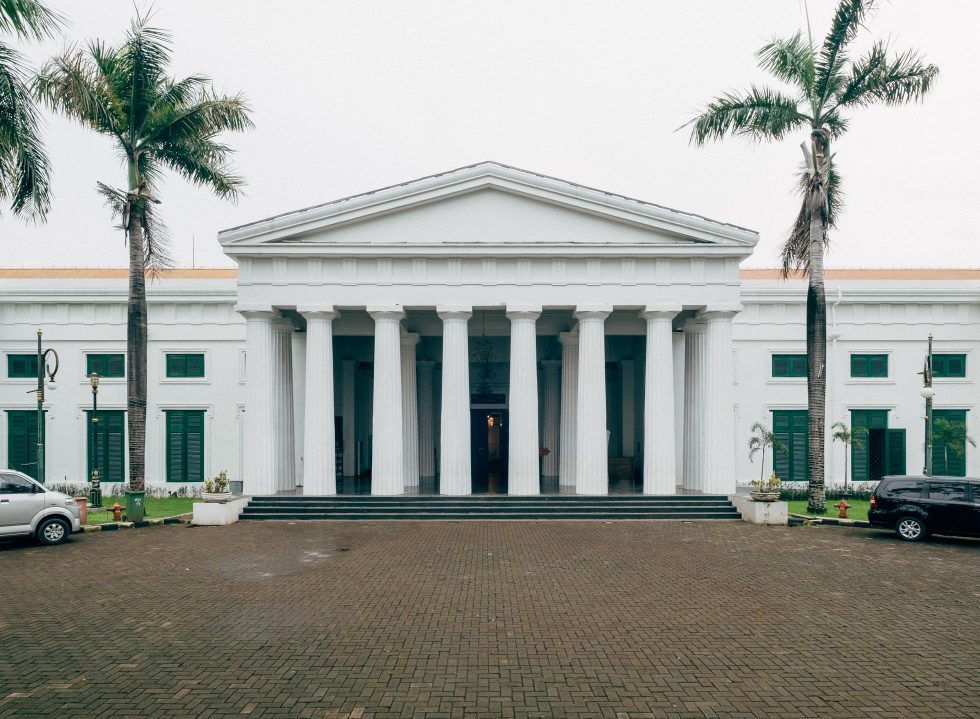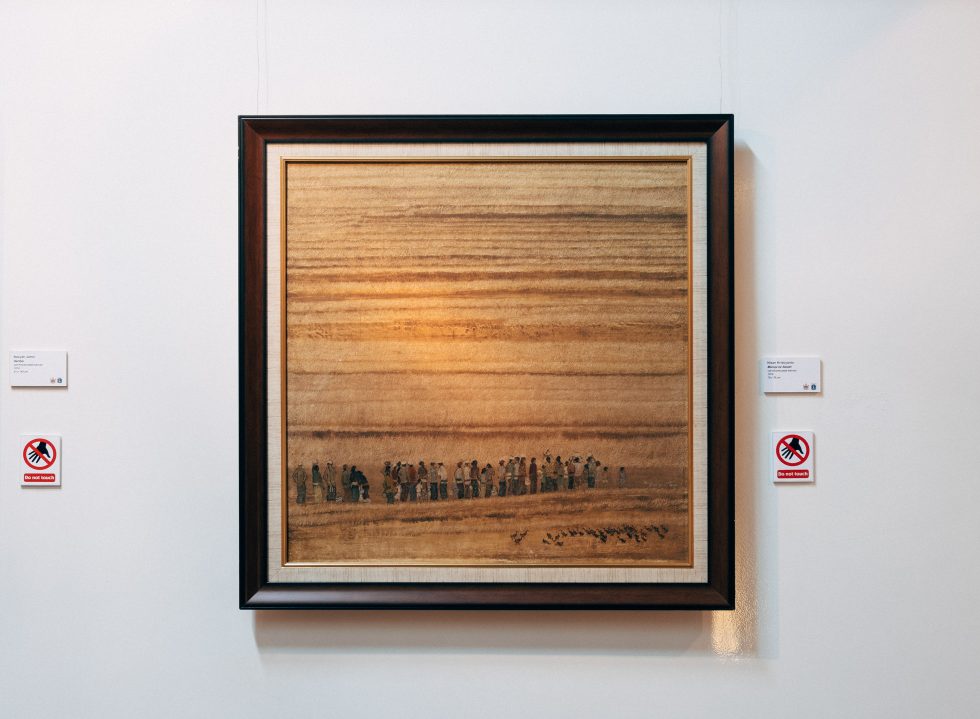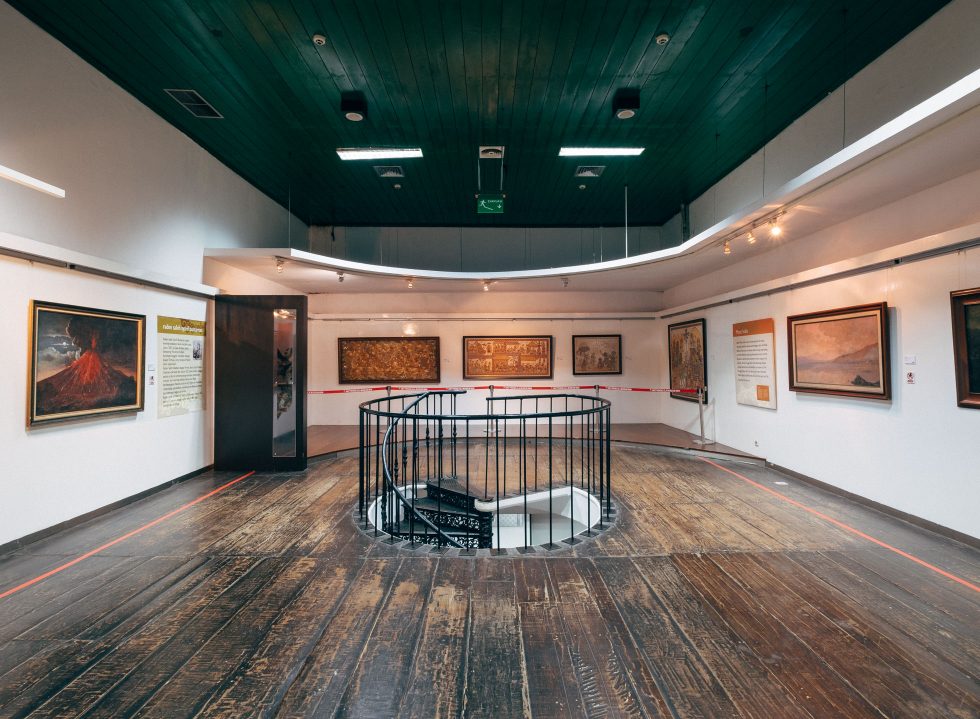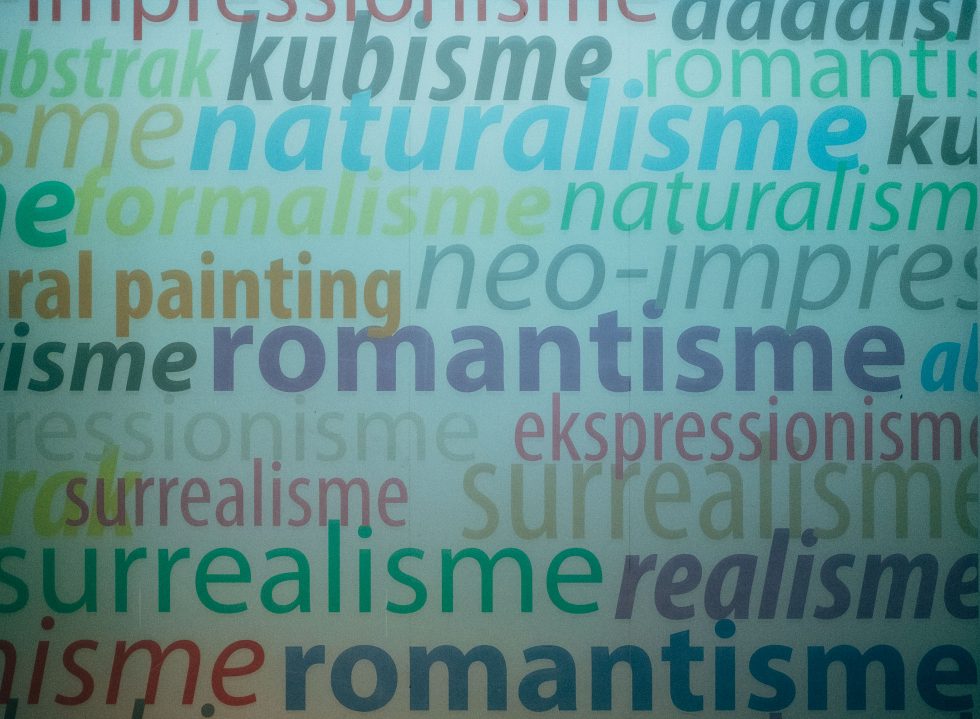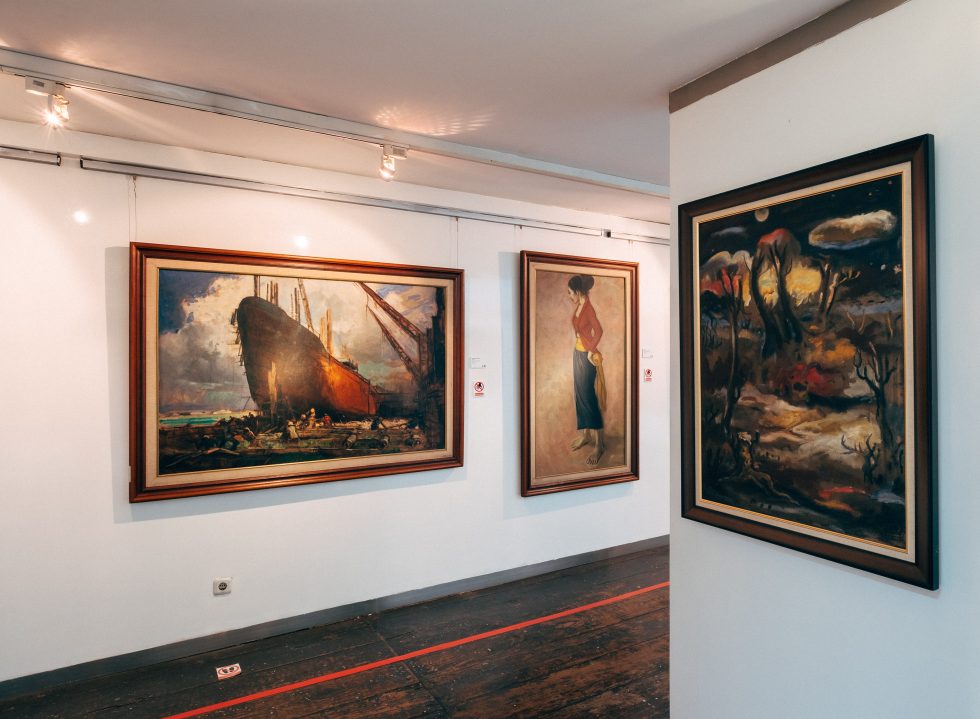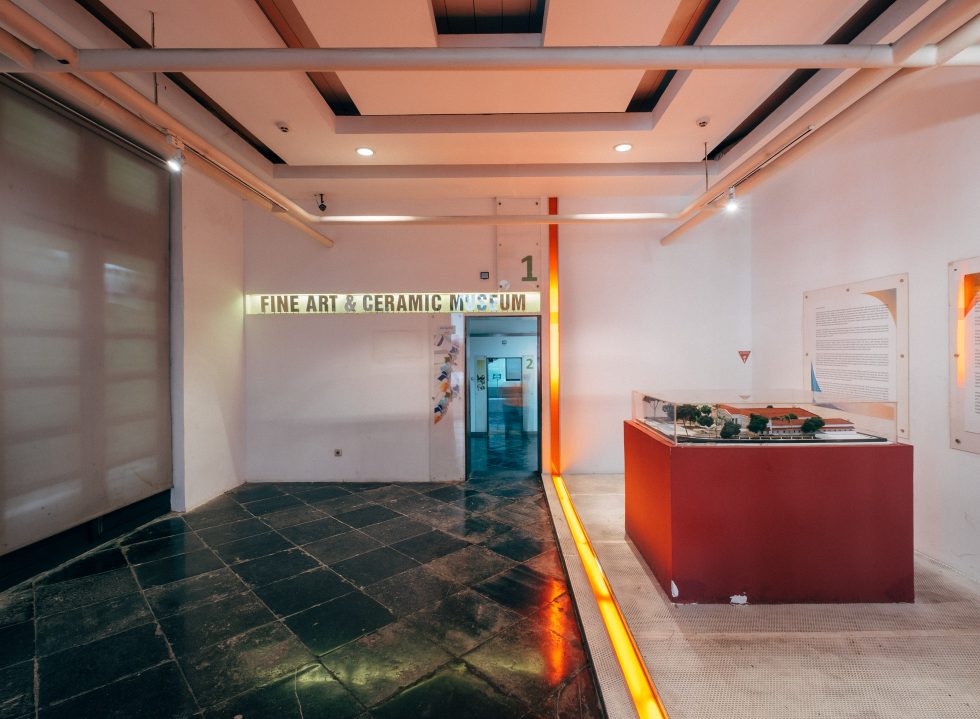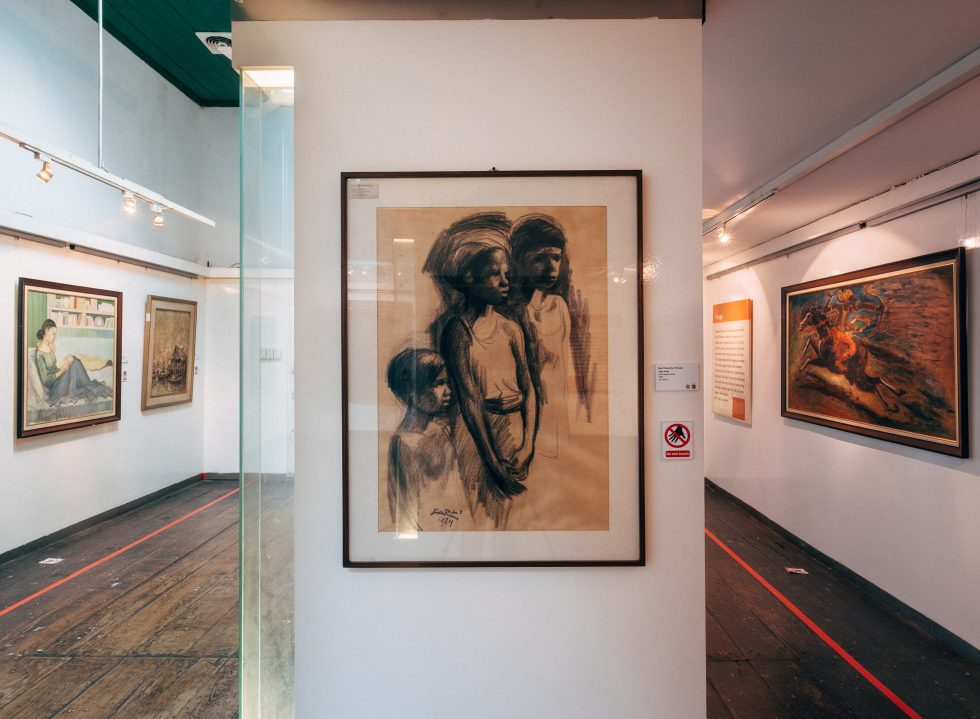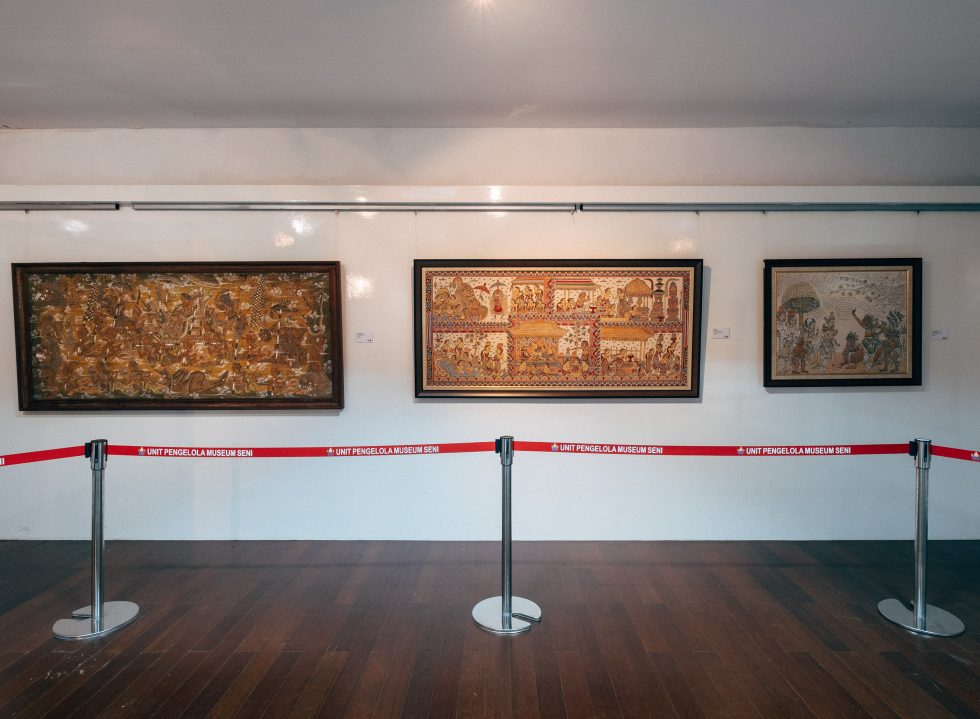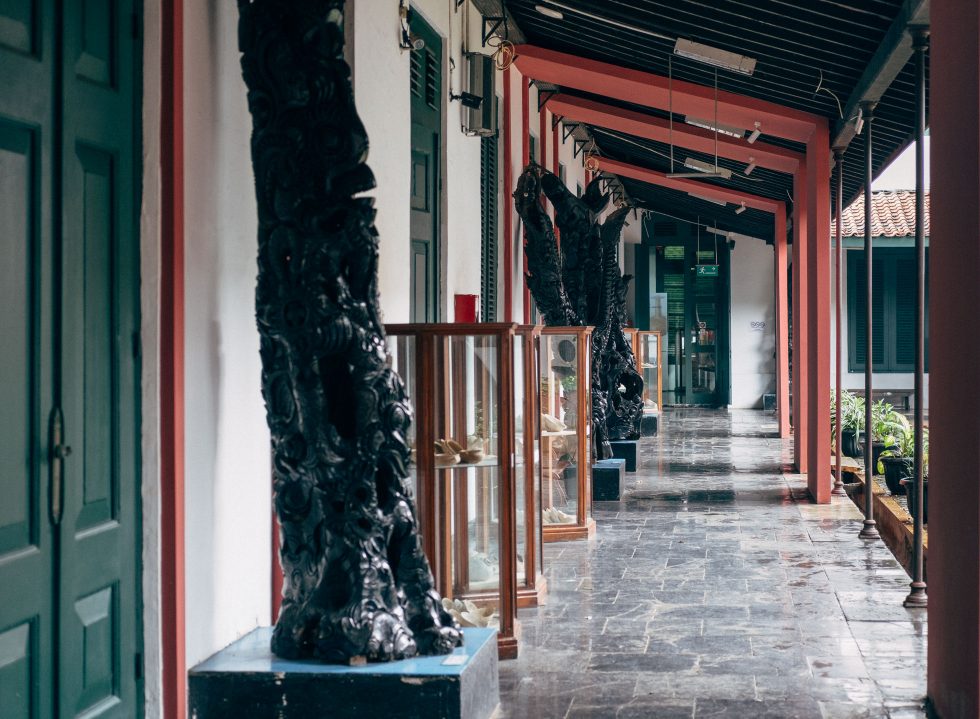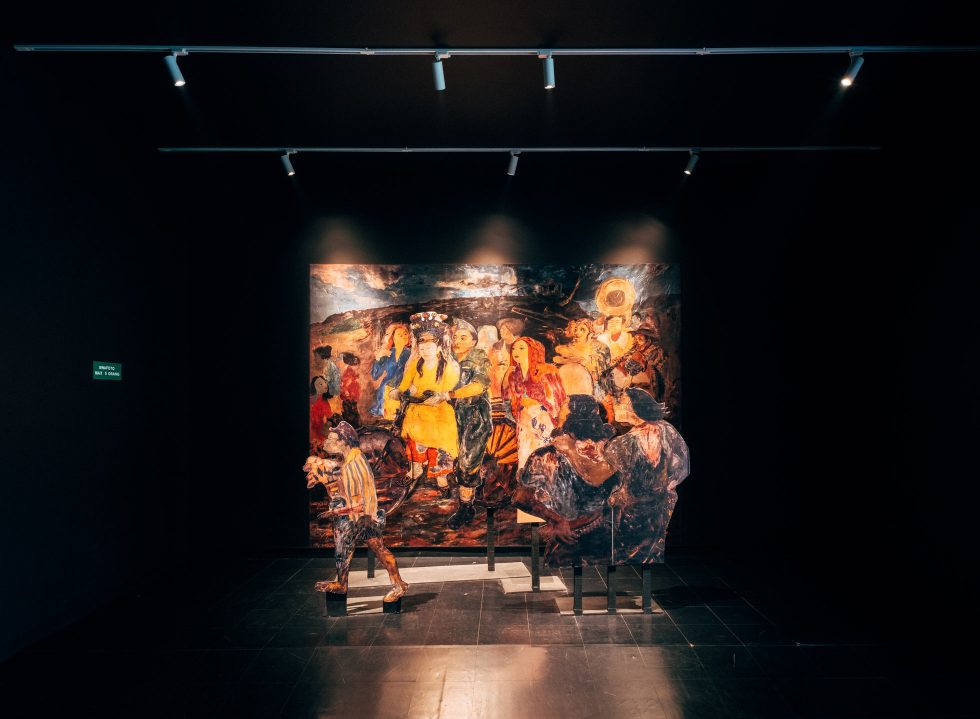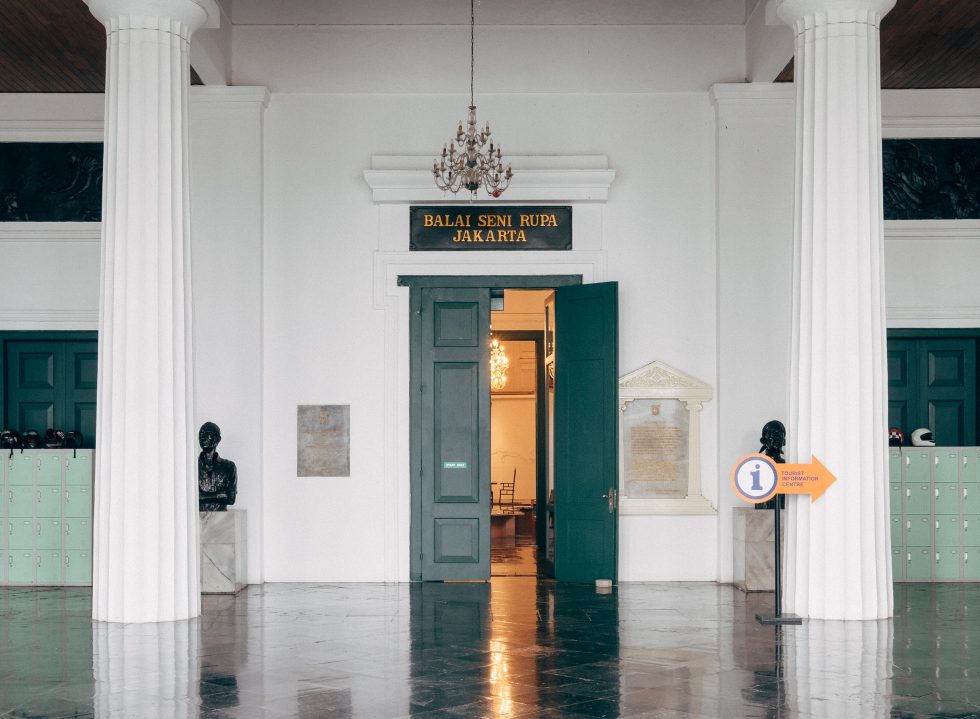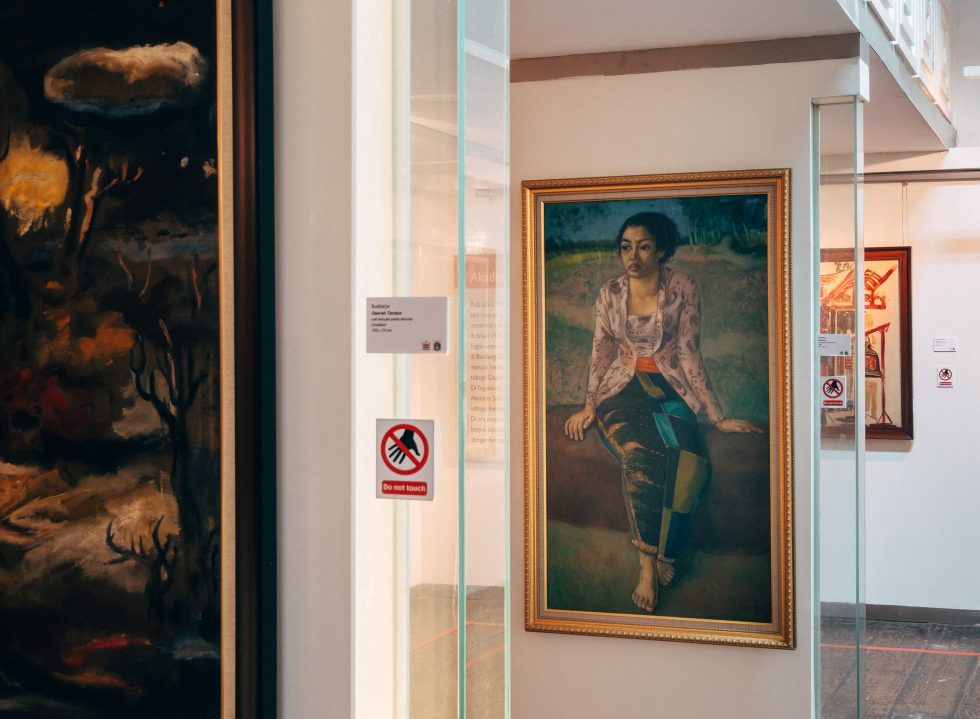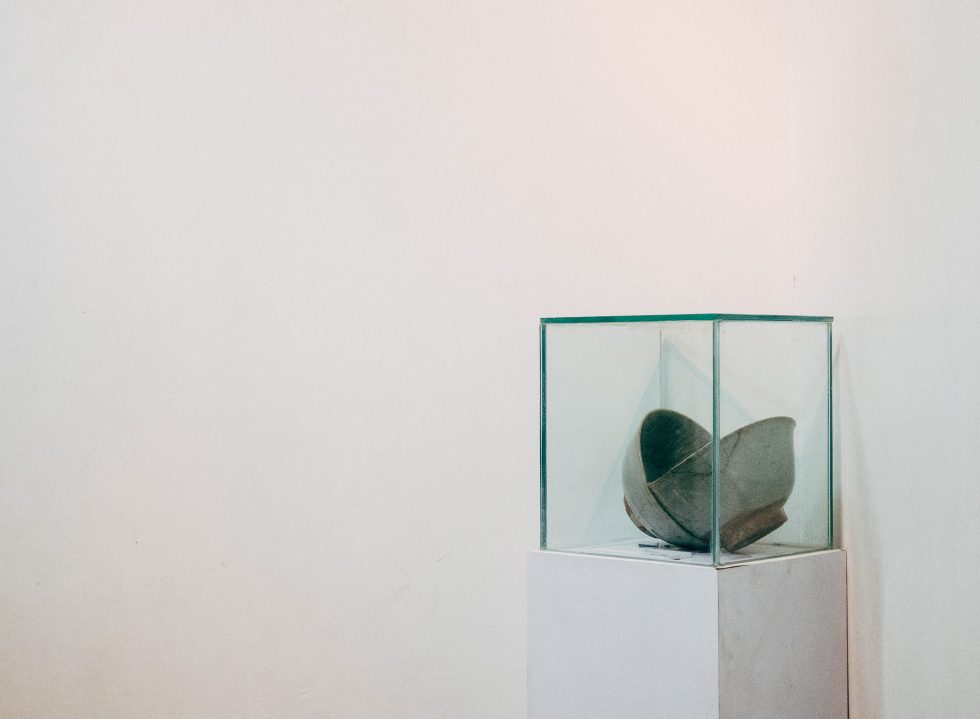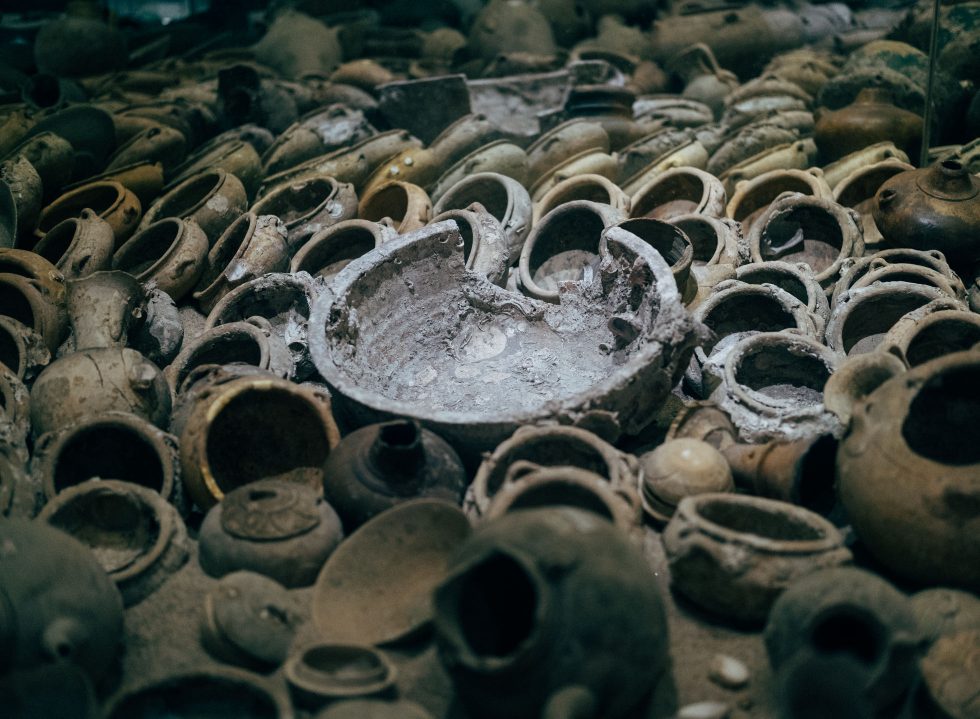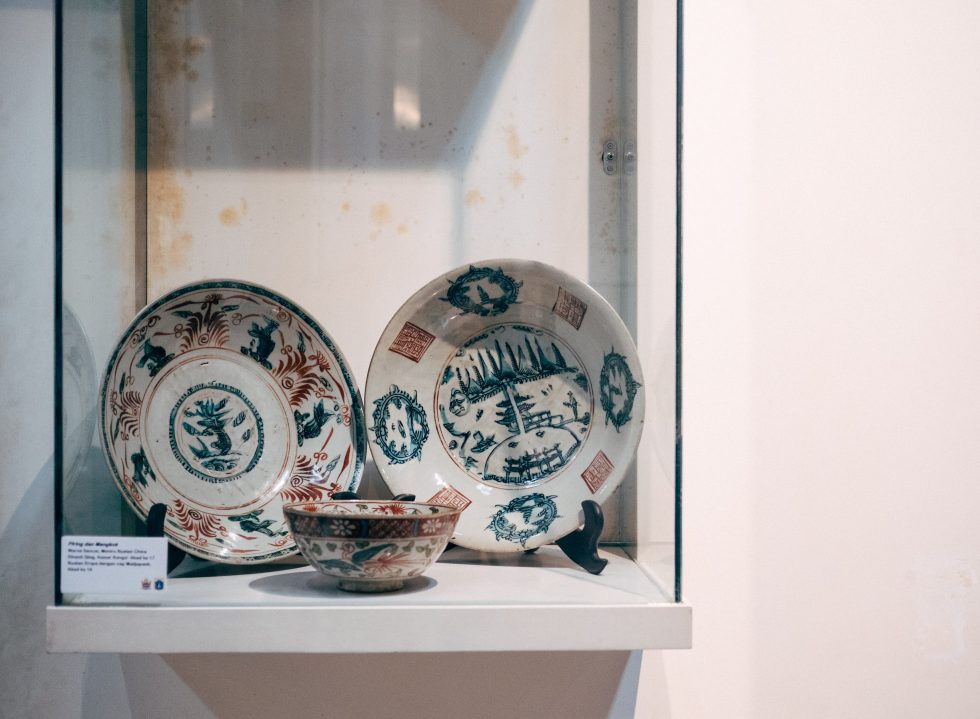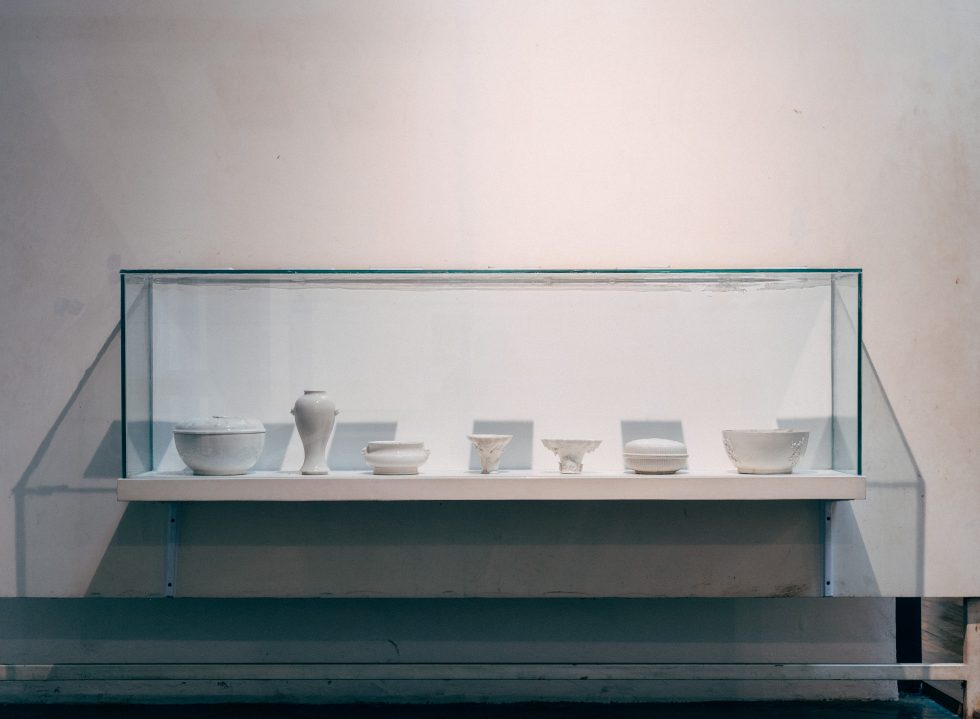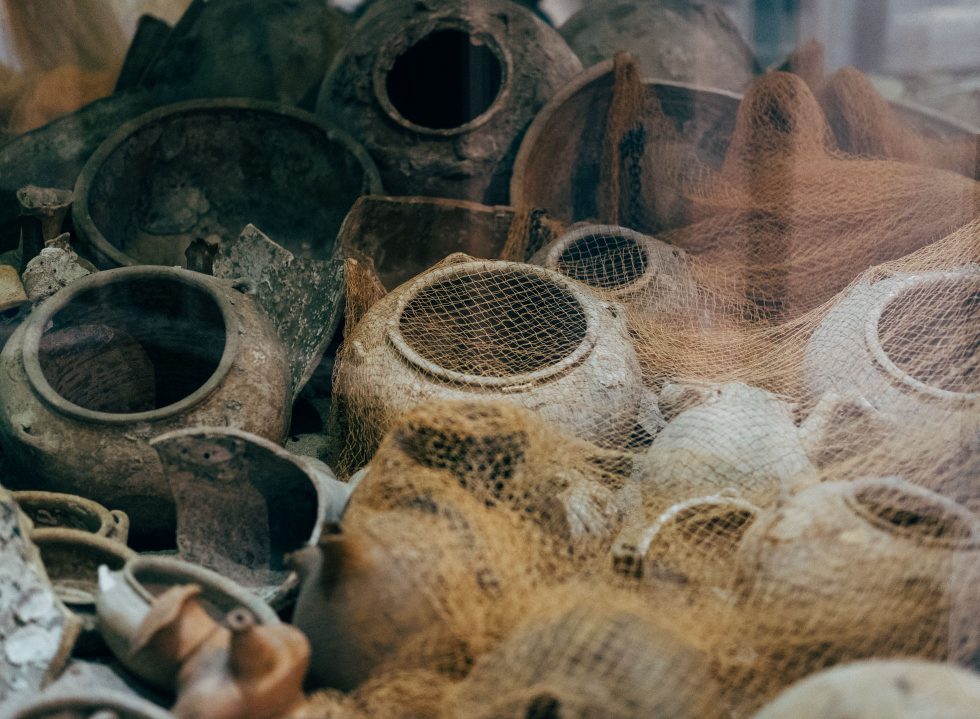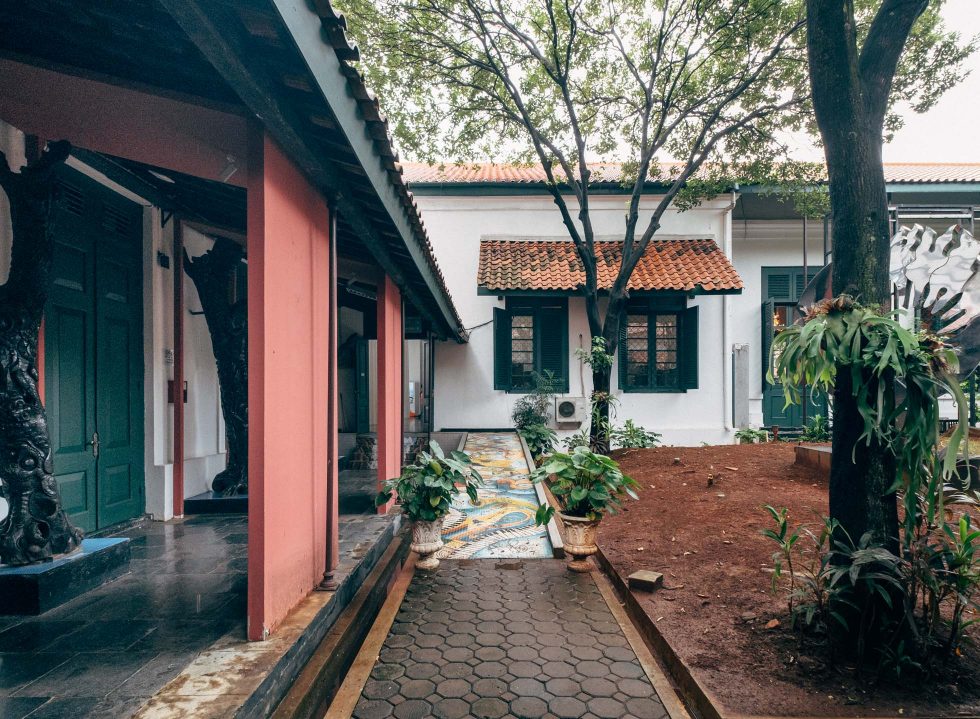Kota Tua, or the Old Batavia, remains one of the city’s most coveted treasures for its recreational endeavours ranging from iconic vintage bike rentals to humble tattoo parlours. Formerly known as the epicentre of the colonial government, the town square grew out of municipal buildings and properties; there sits the Museum of Fine Arts and Ceramics.
Established in 1870, the museum building formerly reigned as a Colonial Dutch Supreme Court before it shifted functions to a military dorm and a mayor’s office, without changing the grand original structure of a Dutch courthouse, complete with Tuscan columns and broad steps.
Upon entering, one will be welcomed with a lush and spacious garden patio that also doubles as a partition for the two buildings of Gallery of Fine Arts and Gallery of Ceramics. Though the backdrop instantly reminds one of the former courthouse, two sculptures of Indonesian pioneering painters, Raden Saleh and S. Sudjojono, will nudge you of its pursuit: to showcase historical fine arts that serve as memoirs to the history of Indonesia.
The paintings, some archived from Adam Malik’s (Indonesia’s former Vice President) private collections, are set in genre-specified rooms: the gallery of prehistoric paintings by Indonesia’s first modern painter Raden Saleh; the gallery of pro-realist painters Persagi (an acronym for Union of Indonesian Painters) by namely S. Sudjojono, Otto Djaya, Emiria Sunassa and Soedibio; the post-Soeharto era marked by a surge in abstract art and solo art galleries of painter and governor of Jakarta circa 60s Henk Ngantung (famous for his sketch Lunch with Bung Karno) and Dede Eri Supria, a Jakarta-born artist known for his critics towards urbanisation and abstract art within his realist paintings.
As you walk down the alley, wooden Balinese sculptures and carvings of characters from Sanskrit epic Ramayana are posed by the doorways to the Gallery of Ceramics. The latter displays ceramics, ranging from shipwreck ruins, porcelains from the ancient Chinese dynasty to earthenwares produced in various regions of the archipelago—many derived from Desa Kasongan, home to artisanal pottery in Yogyakarta. With each room, there’s more to unveil and explore for a whole afternoon.
But taking a detour around the Museum of Fine Art and Ceramics today is both an inspiring and disheartening experience. Finding one of the country’s most historical museums, especially one that preserves and documents Indonesia’s fine arts legacy, in an inapt condition burdens the conscience: what could be so beautiful and enthralling to consume are instead laid bare and poor.
Some areas in the museum are decaying; awkwardly placed museum texts, barely preserved ceramics on the floor—reminding one of ceramics sold in flea markets. With the climate’s extreme humidity, some museum corners are even raided in moulds, making you wonder how far will the neglect go with these circumstances.
The trip down to the Museum could be eye-opening for different reasons: one, for the vast collection it holds, and for how dismaying it is to see how frail it has gotten. Despite the lively surroundings and beguiling art collections, the museum, especially as a national one, should always stand in its prime to do our heritage some justice.
